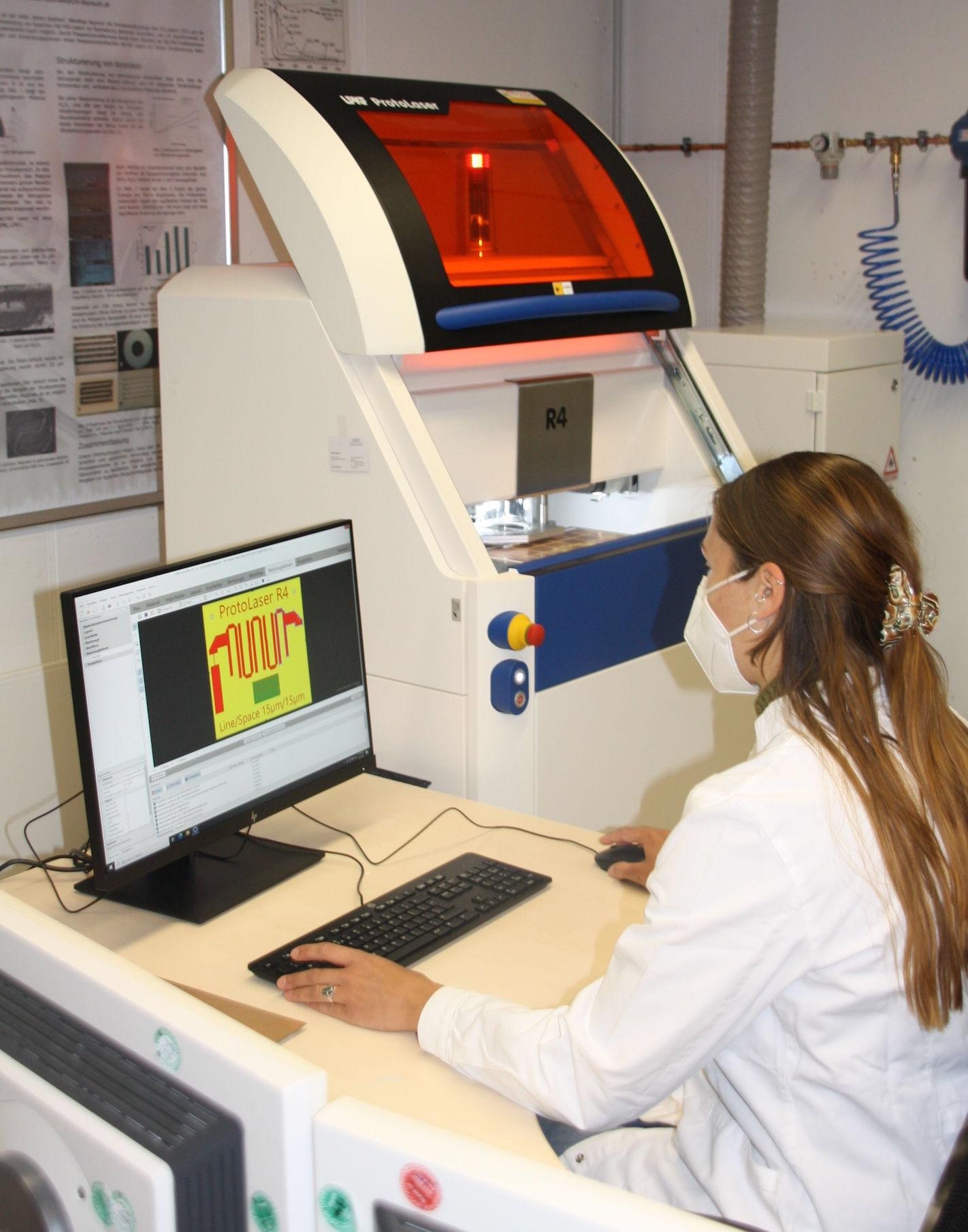Jun 21 2021
A special laser device was recently acquired by the engineering sciences at the University of Bayreuth. This device was fitted with an ultra-short pulse laser source for material processing.
 Kira Schlesier M.Sc. preparing the structuring work on the computer. Image Credit: C. Wißler.
Kira Schlesier M.Sc. preparing the structuring work on the computer. Image Credit: C. Wißler.
The device opens up unimaginable research possibilities in the fields of high-frequency technology, microsystems technology and gas sensor technology. It can shape coatings and layers on sensitive surfaces with excellent precision.
Using the new device, fired or hardened technical substrates of all kinds can be accurately cut or milled. The device was priced at around € 400,000. The German Research Foundation (DFG) provided 50% of the funding to procure the device from the Functional Materials research group.
The novel device can emit ultra-short laser pulses that last 1.5 picoseconds, which is not much longer than a trillionth of a second. As a result, this laser almost eliminates heat transfer during material processing.
The material evaporates immediately when it is hit by the laser beam with utmost precision. Thus, surfaces can be structured and engraved more easily at the micrometer level and in a controlled manner, without affecting the neighboring regions. Other examples include the detachment of metal from plastics or the removal of extremely thin and transparent layers from the substrate. Besides this, accurate cutting and milling of ceramic materials, like aluminum oxide, can also be achieved.
The new laser processing system is invaluable for the research and development of innovative functional materials, for example of highly sensitive sensors or ultra-fine structured printed circuit boards. On the campus of the University of Bayreuth, it will be accessible to all-natural and technical sciences research areas, as well as to external research partners.
Dr -Ing. Ralf Moos, Professor and Chair, Department of Functional Materials, University of Bayreuth
He further stated, “The device will also enable young scientists from and outside of the University of Bayreuth to work on research topics for which the necessary infrastructure is lacking at many other university locations.”
Even our previous device brought us repeated enquiries over recent years, that were the starting point for very interesting research work. I am sure that we will receive just as many requests for our new laser processing system, and get involved in exciting new challenges.
Dr -Ing. Jaroslaw Kita, Department of Functional Materials, University of Bayreuth
Dr. Kita supervised the new device at the Department of Functional Materials.